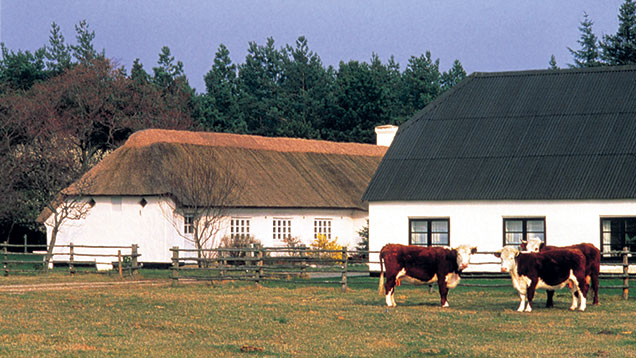What UK farmers can learn from Denmark about collaboration
 © Reso/Rex
© Reso/Rex Britain’s appetite for bacon and butter is a big reason why Danish farmers work together so well.
In the late 1800s, Danish farmers saw the chance to feed the hungry workers of booming industrial Britain.
So, producers pooled their resources to form businesses and brands that let them sell abroad.
A string of mergers over the past 100 years has seen cooperatives like Danish Crown and Arla become world leaders.
See also: Farmer collaboration: UK still way behind Europe
Farmer collaboration has allowed a nation of just 5.6m people to become an important agricultural exporter, with goods as diverse as grass seed and mink fur.
Danes are hooked on shared success: nearly ever farmer is a member of one or more cooperatives. They cover everything from groceries to buying groups to product marketing.
The country had just 28 agricultural cooperatives in 2013 but, on revenue, farmer-owned businesses were 10 times more important to the Danish industry than in the UK.
Farm size
Martin Merrild, chairman of the Danish Agriculture and Food Council, grows a variety of crops, and rears broilers and minks on his 140ha farm.
He thinks farm size could be one reason why farmers decided to pull together in the past.
“We have had a lot of land-owning smaller farmers here – lots of farmers have been in more or less the same situation,” Mr Merrild says.
“It might have been easier to work together than in the UK, where you have a lot of bigger farmers.”
Farmer democracy
A long history of co-operation builds a co-operative mindset.
Mr Merrild explains that Danish farmers are very active in the democracy of the farmer-run businesses, attending meetings in strong numbers and making their voices heard.
Learning from Denmark
- Co-operation can ease tension over prices during downturns
- Competition is now international, not local
- Being an active co-op member takes effort
- Collaboration does not happen overnight
He says the co-operative structure is important in the tough global marketplace, which could force farmers to make difficult changes, such as dealing with new rules and documentation.
“It is easier for farmers when it is their own colleagues who are on the board,” he says.
“It is accepted by most farmers that to be able to compete with the big integrated companies that are developing all over the world, it is necessary and important that we work even closer together.”
Market crisis
Danish pig farmers are facing the brunt of world markets right now.
High production across Europe and Russia’s ban on Western imports has seen pork values crash, leaving many producers making a loss.
Danish Crown, part-owned by 3,000 of the country’s pig farmers, is having to cope with the crisis.
The business’s vice-president for export Søren Tinggaard says the co-op structure avoids difficult negotiations during a downturn.
“When the farmers go to the co-operatives, the price we pay our farmers is the price we can get for the pork in the market, and when it comes to the financial year-end we take the profits and that is divided between the farmers,” he says.
“There is not any money running out of the business for something else.”
Danish Crown is still growing. Its farmers have just approved a merger with rival co-op, Tican. The new business would control of 90% of the country’s pork trade.
“When the farmers go to the co-operatives, the price we pay our farmers is the price we can get for the pork in the market, and when it comes to the financial year-end we take the profits and that is divided between the farmers.”
Søren Tinggaard, Danish Crown
Such market dominance is a far cry from the competition-driven UK, but the Danes are more concerned with international challengers.
When Danish slaughterhouses started shipping bacon to Britain, they formed one co-operative export company to ensure they were not battling each other.
“We have to be competitive across Europe,” Mr Tingaard says.
Arla
Dairy co-op Arla knows what it is like to compete across the continent.
Formed in 2000 when a Swedish and a Danish co-op joined forces, Arla is now owned by 13,500 farmers across seven countries.
Søren Madsen, who milks 600 Jerseys on 400ha south of Copenhagen, is one of Arla’s 3,000 Danish farmer-owners. The co-operative buys about 90% of the country’s milk.
Mr Madsen says Arla’s expansion across Europe has brought new challenges when it comes to running a farmer-owned business.
“The idea should be the same, but we are in different countries, with different cultures, different ways of doing things and different costs,” he says.
Arla ensures farmers’ views are represented through a string of local and national committees that feed into an elected board of representatives and a smaller board of directors. Like at Danish Crown, each farmer-owner has one vote.
But Mr Madsen says even Denmark’s rich history of farmer collaboration can be tested in difficult times like today, when the European economy is sluggish and milk prices remain on the floor.
“Being in a co-operative also requires participating in the work of being a member,” he says.
“To be an active part of the cooperative is not the first thing you are thinking when you are stressed.”

